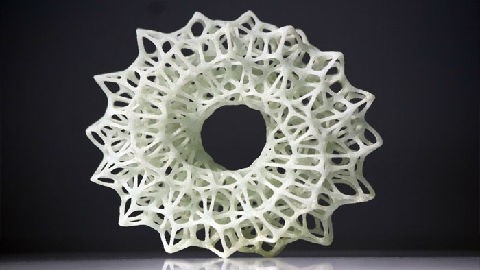3D printing technology is growing rapidly, and its market is one of the healthcare industry, it has been growing at an alarming rate of development of new medical applications. It used to be a small wave in the 3D printing tide, but now it has developed its own industry in this industry, and it seems that it will continue to expand in the next four years. We have seen some amazing developments in bioprinting, prosthetics, and custom medical implants over the past few years. Although most of these developments are only a relatively small part of the industry, this small segment is expected to leapfrog as they have matured and become more widely used in the market.

A new market research report released by consulting firm IndustryARC has divided the medical 3D printing industry into several categories and sub-categories, including commonly used technologies such as fused deposition (FDM), laser beam melting (LBM), and electron beam melting. Molding (EBM) and photocuring (SLA). There is also an entire section devoted to materials used in the healthcare industry, including metals, resins and biomaterials such as cells. These data are also separated by geography and application, such as medical implants and tissue bioprints.
According to the report, in 2014, the global 3D printing healthcare market revenue was $ 487 million, and IndustryARC expects to grow by about 18.3% annually by 2020. The driving force for this rapid expansion is mainly due to the industry's increased use of 3D printing technology for medical applications, which is currently being extended to multiple applications. The healthcare industry has grown significantly in different areas, such as dental applications, medical implants, and drug manufacturing, and the range of materials used in these applications is extensive. Dental implants are mainly made of metal materials and ceramics for 3D printing of crowns, while the medical research industry has its own various advanced biological materials.
In 2014, medical 3D printed materials accounted for $284.7 million in health care alone, and it is estimated that its compound annual growth rate will be faster than other industries. Until 2020, medical and dental 3D printed materials are expected to grow at a rate of 19.1%. Commonly used 3D printed materials for healthcare applications include plastics, metals, ceramics, donor cells, bone cements, and various biomaterials. Metal powders and biomaterials are still very expensive, but technological advances are reducing the cost of metals, and biomaterials are still in the research stage. As they become more commonly used materials in the healthcare industry, prices are expected to decline.
One of the driving forces behind the growth of the medical 3D printing industry comes from the growing demand for patient-specific products in orthopedics and maxillofacial surgery. In addition, 3D bioprinting is also progressing in tissue engineering. IndustryARC expects tissue produced by bioprinting to serve as a transplanted organ and tissue in the near future. The cost reduction of 3D printing technology is predicted to be based on government subsidy programs and medical bioprint research funding.
North America is currently an important consumer of 3D printing technology in the healthcare industry, accounting for 39.7% of the total market share in 2014. Europe is the second largest market for 3D printed medical applications, followed by the Asia Pacific region (APAC), which accounted for 37% of the market in 2014. Although the market in Asia Pacific is much smaller than North America, it is growing at a faster rate than in Europe and North America.
Companies contributing to the growth of healthcare and medical 3D printing applications include 3D Systems, Stratasys, EnvisionTEC, Invetech, Digilab, MicroFab Technologies, nScrypt and Tevido BioDevices. You can download this market research report from IndustryARC directly at Reportbuyer.com.
Anesthesia Medical Co., Ltd. , https://www.medicaldiverse.com